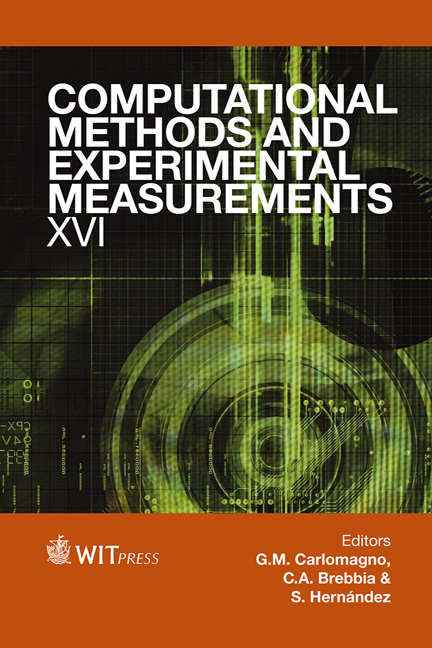The Areolar Strain Approach For Grazing Waves
Price
Free (open access)
Transaction
Volume
55
Pages
13
Page Range
55 - 67
Published
2013
Size
329 kb
Paper DOI
10.2495/CMEM130051
Copyright
WIT Press
Author(s)
I. D. Kotchergenko
Abstract
Authors are almost unanimous regarding the ratios between reflected and incident plane wave amplitudes obtained through the condition of zero traction at a free surface, except for grazing waves. Goodier and Bishop showed that the traditional approach fails in cases of wave travels grazing the surface. The writer argues that the traditional theory fails also for incidence angles beyond that where the total mode conversion from P-wave to S-wave occurs, and also shows that after this angle, phase inversion no longer occurs. The reason for this behavior is that plane waves are characterized by some constraints between their fundamental modes of strain. These constraints are set up by the waveguide equations presented by the writer. It then happens that it does not exist a set of incident and reflected plane waves that can fulfils the condition of zero traction at the reflecting surface. Therefore some scattering of the incident wave is supposed to occur near the free boundary. The equation of conservation of flux of energy together with the equations of zero traction at surface, are not sufficient for determining the nature of this scattering. The writer hence appeals also to the strain compatibility equation at the free surface and obtains an expression for the reflecting P-wave that agrees with the results of Goodier and Bishop. It is remarkable that the angle of total mode conversion is preserved. New curves of reflections are proposed. The P-wave reflection curve little differs from the traditional up to the total mode conversion angle but completely differs between this up to the grazing angle. The S-wave to P-wave reflection ratio almost follows the traditional. Waves are represented through the superposition of the four fundamental modes of the plane areolar strain theory of elasticity. This theory was presented at WIT Transactions on Modeling and Simulation, Vol. 46, 2007, WIT Press, (free), with application to orthotropic materials and finite rotations. Keywords: elastic waves, wave reflection, waveguides, grazing waves.
Keywords
Keywords: elastic waves, wave reflection, waveguides, grazing waves.





